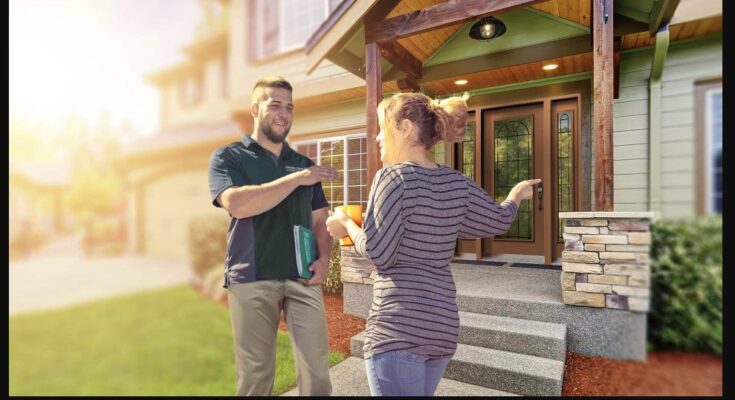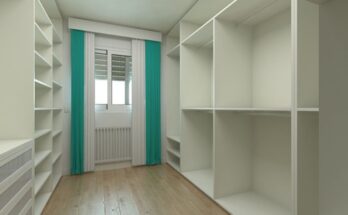As the sun’s rays become increasingly intense, finding effective ways to protect our homes and ourselves from harmful UV exposure is crucial. Fortunately, many affordable home improvement projects can help maximize sun protection.
This article will guide you through various low-cost strategies to shield your home from the sun while enhancing comfort and energy efficiency.
Contents
- 1 Introduction
- 2 Understanding the Importance of Sun Protection
- 3 Affordable Window Treatments
- 4 Outdoor Shade Solutions
- 5 Reflective Roofing Options
- 6 Insulating Paint and Coatings
- 7 DIY Solar Screens
- 8 Planting Trees and Shrubs
- 9 Using Awnings and Canopies
- 10 Creating Cool Roofs
- 11 Maintaining Your Sun Protection Measures
- 12 Conclusion
- 13 FAQs
Introduction
Sun protection is not just about slathering on sunscreen before heading outside. It’s about creating a living environment that minimizes exposure to harmful UV rays, reduces heat buildup, and ultimately saves on energy costs.
Whether you’re a DIY enthusiast or someone looking for simple fixes, there are numerous low-cost home improvement projects you can undertake to enhance your home’s sun protection.
Understanding the Importance of Sun Protection
Why is sun protection so important? Apart from the obvious health risks associated with prolonged UV exposure, excessive sunlight can cause significant damage to your home’s interior, fading furniture, flooring, and artwork. Additionally, high indoor temperatures increase the need for air conditioning, leading to higher energy bills.
Affordable Window Treatments
One of the simplest ways to reduce sun exposure inside your home is by upgrading your window treatments. Consider these options:
- Blackout Curtains: These thick, opaque curtains block out sunlight and can help keep your home cooler.
- Window Films: Apply reflective or tinted films to your windows to reduce glare and block UV rays.
- Blinds and Shades: Choose light-colored or reflective blinds and shades that can deflect sunlight.
Outdoor Shade Solutions
Creating shade around your home’s exterior can significantly reduce indoor temperatures. Here are some cost-effective options:
- Patio Umbrellas: Large, adjustable umbrellas provide flexible shading for outdoor areas.
- Shade Sails: Install durable fabric sails in strategic locations to create shaded zones in your yard.
- Pergolas and Gazebos: These structures can be enhanced with climbing plants or fabric covers to provide substantial shade.
Reflective Roofing Options
Reflective roofing materials can dramatically decrease the amount of heat absorbed by your home. Consider these affordable options:
- Cool Roof Coatings: Apply reflective coatings to your existing roof to improve its heat-reflecting properties.
- Light-Colored Shingles: If replacing your roof, opt for light-colored or reflective shingles that deflect more sunlight.
Insulating Paint and Coatings
Specialized paints and coatings can provide an additional layer of sun protection:
- Insulating Paint: This type of paint contains reflective materials that help reduce heat transfer through your home’s exterior walls.
- UV-Resistant Coatings: Apply these coatings to outdoor furniture, decks, and other surfaces to prevent UV damage.
DIY Solar Screens
Solar screens are a cost-effective way to block up to 90% of solar heat before it enters your windows. Here’s how you can make them yourself:
- Materials Needed: Solar screen fabric, spline, spline roller, and a frame kit.
- Installation Steps: Measure your windows, cut the screen fabric to size, and attach it to the frame using the spline and roller.
Planting Trees and Shrubs
Nature provides an excellent solution for sun protection. Strategic planting can create natural shade and reduce cooling costs:
- Deciduous Trees: Plant trees that lose their leaves in winter to provide shade in summer while allowing sunlight in winter.
- Evergreen Shrubs: Use these around the perimeter of your home to block low-angle sun and provide year-round protection.
Using Awnings and Canopies
Awnings and canopies can be both functional and decorative. They offer immediate shade and can be customized to fit any window or patio:
- Retractable Awnings: These allow you to adjust the amount of shade as needed.
- Fixed Canopies: Permanent structures that provide constant protection from the sun.
Creating Cool Roofs
Cool roofs are designed to reflect more sunlight and absorb less heat than standard roofs. Here’s how you can create one:
- Cool Roof Materials: Choose materials like metal roofing, cool-colored asphalt shingles, or tiles.
- Roof Coatings: Apply reflective roof coatings to existing roofs to enhance their reflective properties.
Maintaining Your Sun Protection Measures
Regular maintenance ensures that your sun protection measures remain effective. Here are some tips:
- Clean Window Films and Screens: Regularly clean these to maintain their effectiveness.
- Inspect and Repair Awnings and Canopies: Check for wear and tear and repair as needed.
- Trim Trees and Shrubs: Keep your plants healthy and properly trimmed to ensure they provide optimal shade.
Conclusion
Maximizing sun protection in your home doesn’t have to be an expensive endeavor. With these low-cost home improvement projects, you can effectively reduce UV exposure, keep your home cooler, and save on energy costs. Whether through DIY solar screens or planting strategic greenery, each step you take contributes to a more comfortable and protected living space.
FAQs
1. What are some affordable ways to protect my home from the sun?
There are many affordable ways to protect your home from the sun, including using blackout curtains, applying window films, installing shade sails, and planting trees and shrubs.
2. How do reflective roof coatings work?
Reflective roof coatings are applied to existing roofs to enhance their ability to reflect sunlight, reducing the amount of heat absorbed by your home.
3. Can insulating paint really help reduce indoor temperatures?
Yes, insulating paint contains reflective materials that can help reduce heat transfer through your home’s exterior walls, keeping indoor temperatures lower.
4. How can I make my own solar screens?
You can make your own solar screens by purchasing solar screen fabric, spline, a spline roller, and a frame kit, then cutting the fabric to size and attaching it to the frame.
5. What types of trees are best for providing shade?
Deciduous trees, which lose their leaves in winter, are excellent for providing shade in summer while allowing sunlight in winter. Evergreen shrubs are also effective for year-round protection.
If you gained new insights from this article, explore our blog, Gimkit, for more enlightening content.



